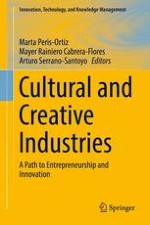This book examines the ways in which cultural and creative industries can drive entrepreneurship, innovation, sustainability and overall regional development. It will address such issues as (1) the technical (tangible) components of creative and cultural industries in relation to innovation; (2) the intangible components of creative and cultural industries in relation to services provided; (3) the relationship between tangible and intangible components and economic and social innovation; and (4) the ways in which creative and cultural industries effect and influence regional sustainability and development.
Cultural and creative industries and the creative economy as a whole have been increasingly prevalent in research literature because of their role in driving economic and social development. Cultural and creative industries also enable other forms of entrepreneurship and innovation beyond the traditional, technology-based focus of innovation, thereby enhancing regional growth and development through these channels. The contributions presented in this book discuss the main issues, challenges, opportunities and trends of cultural and creative industries through conceptual analysis and cases studies from different world regions. Featuring research from industries such as art, health care, beer and wine and education, this book provides researchers, academics, professionals and policy makers with a detailed examination of the development and potential of cultural and creative industries in regional and global economies.
